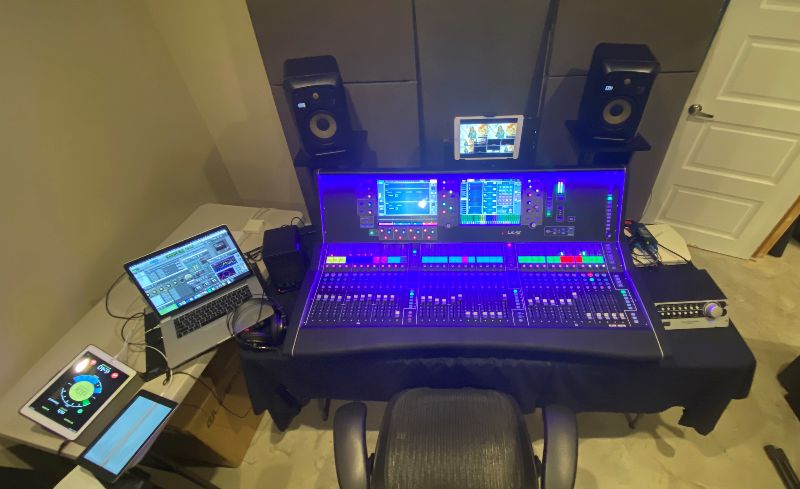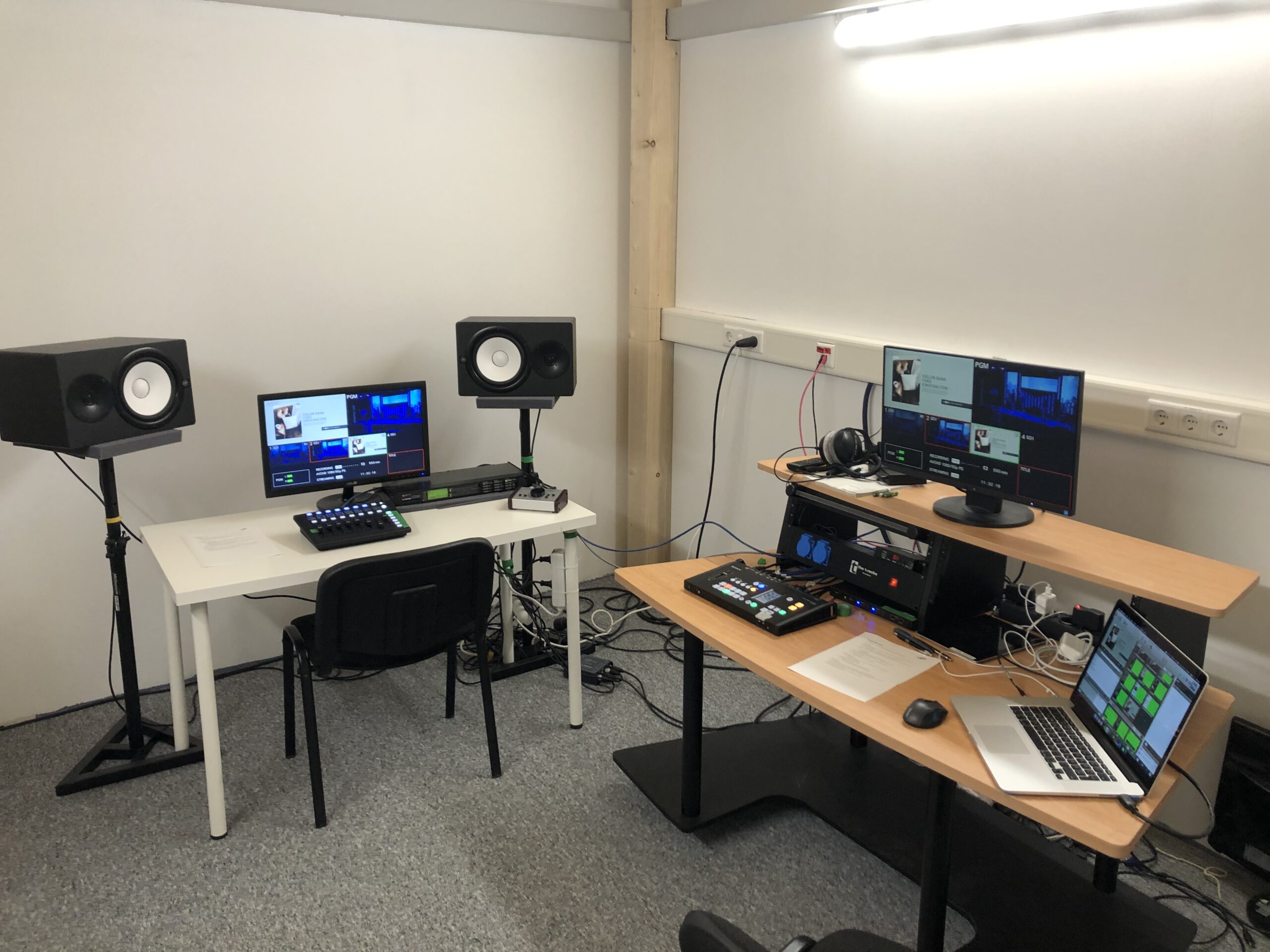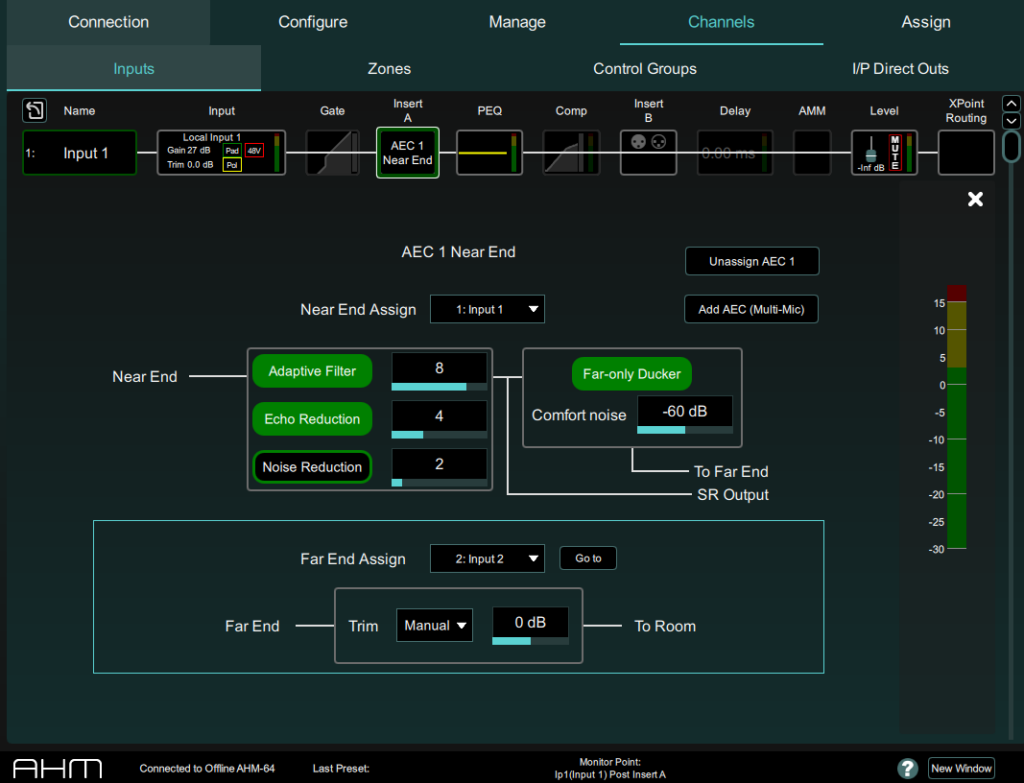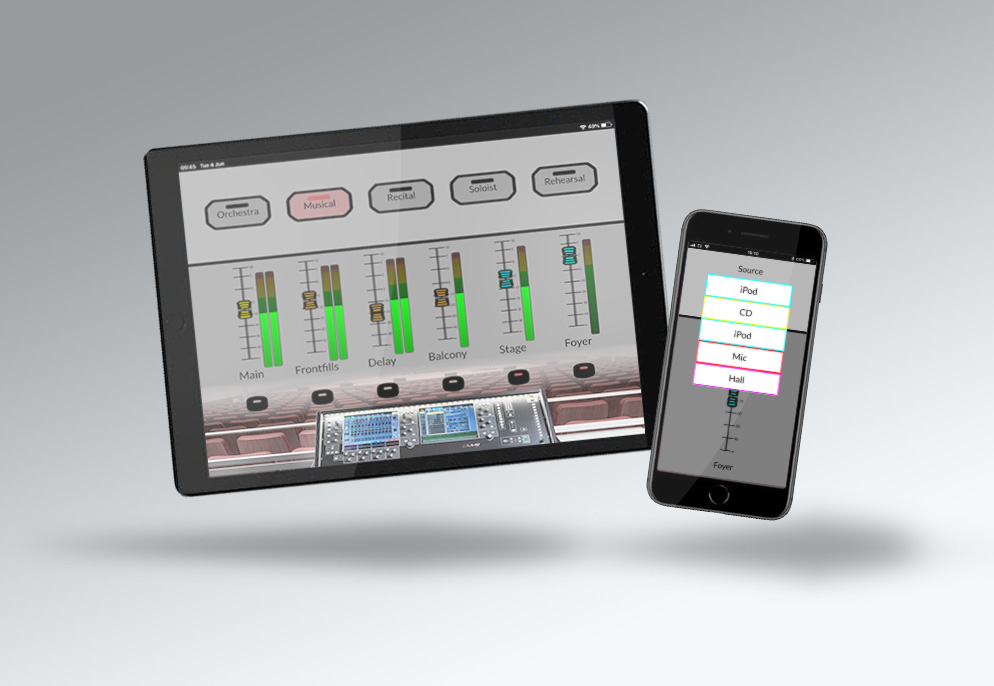Pro Audio in the Time of COVID: A Manufacturer’s Reflection
Originally published in Worship Musician Magazine, March 2022
By Nicola Beretta, Allen & Heath
Two years from the start of the pandemic, it seems like a good time to reflect on how audio installations have adapted or responded to the ‘new normal’.
A lot has been said about the impact of COVID-19, lockdowns and restrictions on our industry, and how other factors like component shortages and the shipping crisis have affected the pro audio business (Jeff’s ‘No Dante, No Problem’ article for instance). Here I want to focus instead on the application and use of audio products, more specifically mixing consoles and matrix processors. How have the requirements changed over the last 24 months? What have we learned that we can apply in future product design? What are the features that helped customers navigate these difficult times?
Content creation and the streaming revolution
After an inevitable lull in orders in early 2020, with businesses facing much uncertainty, our sales recovered at first thanks to pent-up demand for DJ and small analog mixers, a phase I would describe as ‘unlocking creativity in lockdown‘. Soon though, it was clear that demand for digital consoles was on the rise again, particularly from the House of Worship market (that’s you!)
If live-streaming was a luxury only larger churches could afford pre-pandemic, now it was a critical step in reaching the congregation. With Allen & Heath mixers widely established in the HoW scene already, naturally customers wanted to add a secondary console for broadcast or streaming duties – be it a second dLive or scaling down to an Avantis or SQ. All our digital mixers can easily share audio, they can use the same range of audio expanders, and they present a similar workflow to the user, all factors which eased the adoption of a second or third console into the system.
Examples include the award-winning Pearl Technology’s Methodist Church upgrade in Peoria, Illinois, with dLive systems installed as part of a streaming, podcasting and video production studio; and the ICF Church in Munich and Herrenberg where an IP8 remote controller was deployed for the live stream mix in the video room.
SQ mixers have done particularly well thanks to their integrated USB interface and the ability to control audio production software via MIDI. For instance, the Nexus Christian Fellowship church in Bangkok coupled an Avantis at FOH with an SQ-6 in the live-stream and recording room.
But pivoting from live performance to live streaming was not a trend exclusive to churches. Theaters and other venues followed suit. The Det Nye Teateret in Trondheim, Gleis4 Cultural Centre in Frenkenthal, Wiltshire Music Centre in Bradford-on-Avon and Granada Theatre in Mount Vernon are all examples of venues that opted for SQ, Avantis or dLive mixers for live streaming, reaching new and diverse audiences. And as a result, our mixers have supported a huge variety of live streaming content these past two years, from rocket launches to musicals.
Life on Teams – and the need for AEC
If you asked me two years ago, I’d never have guessed the amount of hours I now spend on Teams calls or Zoom meetings. With new habits comes new tech, in the form of HD webcams and Bluetooth headsets. And although Teams, Zoom and similar normally do a pretty good job at cloud-processing our speech (for example, removing background noise or annoying echo), there are situations where hardware AEC (Acoustic Echo Cancelling) is the best option.
For example:
- When local voice reinforcement is also required – in this case, the dedicated SR output of a hardware AEC, and its inherent low latency are beneficial.
- In larger halls, where the reflection pattern might exceed the filter length of typical cloud processing tools.
- In multi-microphone setups, e.g. around a conference room, in which case a hardware AEC solution can analyze and react to individual inputs in the room, and optimize the response for each, as opposed to a combined feed.
For our AHM-32 and AHM-64 processors we have developed a module which provides 12 channels of AEC with 150ms adaptive filters, far-end AGC (Automatic Gain Control), residual echo NLP (non-linear processing), background noise reduction, near-end gating and speech-shaped comfort noise. The Christian non-profit organization KISI was the first one to install an AEC-enabled AHM-64 at their Altmunster house to handle their regular Zoom meetings and remote vocal coaching.
Bring Your Own Device please, it’s safer
As shared touch surfaces quickly became a concern, the BYOD trend grew ever stronger. The ability to control an AV system from the user’s personal device, be it a tablet, laptop or mobile phone, can mitigate COVID risk and add convenience at the same time.
To facilitate this however, the control app cannot rely on manual uploading of files or user interfaces on each and every device. Instead, our Custom Control app was designed so that the interface lives in the audio engine (dLive, Avantis or AHM) and is instantly deployed, on-demand, to a user device, based on the login credentials. Multiple user interfaces can be created for different user profiles and device types, and uploaded to the system from the editor application. So for example, a bartender logging into the system with a phone would get simple background music source selection and level, whereas an AV operator would get multiple mic levels on a tablet and more comprehensive control on a laptop interface.
Remote control … Really!
Travel restrictions are another element of the pandemic that dramatically changed our business habits. Red lists, pre-departure tests, passenger locator forms and screenings on arrival all had an impact on the event, live music and AV sectors which rely heavily on international travel.
In some cases, the ability to log into a system over an Internet or VPN connection can be, if not life-saving, certainly gig-saving. Whether it’s an installed matrix processor in a conference center or a FoH mixer in a theatre, the option of WAN control meant our customers could stay put in lockdown regions or while self-isolating, and remote into a system thousands of miles away for diagnostics, troubleshooting, system commissioning, or even to take the helm of a live mix.
This was the case with engineer Rich Bryant mixing a broadcast feed from his studio in Sydney – a distance of 1400 miles (and two timezones) from the Michael Fowler Centre in Wellington, NZ, for the Passionate Women’s Conference. A dLive DM64 was deployed at the venue by local hire company Lampros Sound, for Rich to control remotely from his Sydney studio over a WAN service.

Sound engineer Rich Bryant mixed the broadcast feed for the event from his studio in Sydney, Australia – 2,300km away.
Elsewhere in a more permanent setup, a global media network deployed AHM-64 across locations in Europe and APAC, but set up a single office in HK to control the matrix processors deployed in all locations for remote configuration and diagnostics.
Conclusion
We are now getting used to the idea of at least some of the effects of COVID staying with us for the foreseeable future, but even if it weren’t, I believe some of the technology changes our industry adopted and adapted to are here to stay. Take remote control for example. Sure, there will always be situation where a visit in person is the best option, but I can see integrators logging into AV installations more regularly from the comfort of their office. Similarly, BYOD control of AV and live streaming facilities will be standard features of new projects with architects and consultants probably wondering ‘how could we manage without that before?’
About Nicola Beretta:
A Pro Audio enthusiast with decades of experience in sound engineering, audio networking and system design, Nicola is currently the Head of Product at Allen & Heath. If he isn’t out enjoying long motorcycle rides or gliding through the skies, he’s busy leading a team of talented Product Managers, Support Engineers and regional Technical Marketing Managers.
Related News
dLive Takes The Stage with Beartooth on US Tour
Learn more Read more about dLive Takes The Stage with Beartooth on US TourCJD Productions Tours with Custom dLive Build
When sound engineer Chris DiCorpo made the switch to Allen & Heath's dLive platform, he already understood the concept of mixing…
Learn more Read more about CJD Productions Tours with Custom dLive Build

